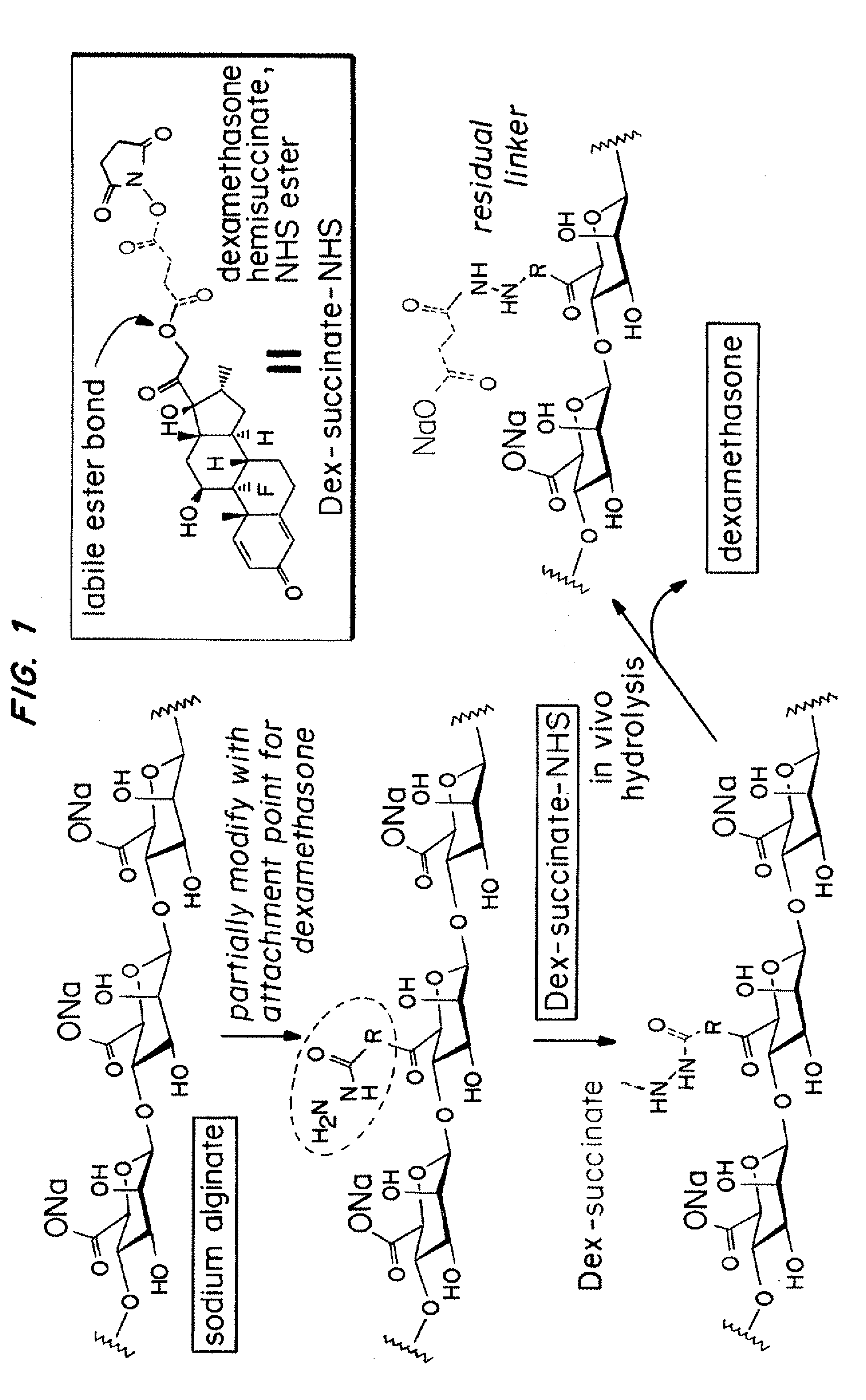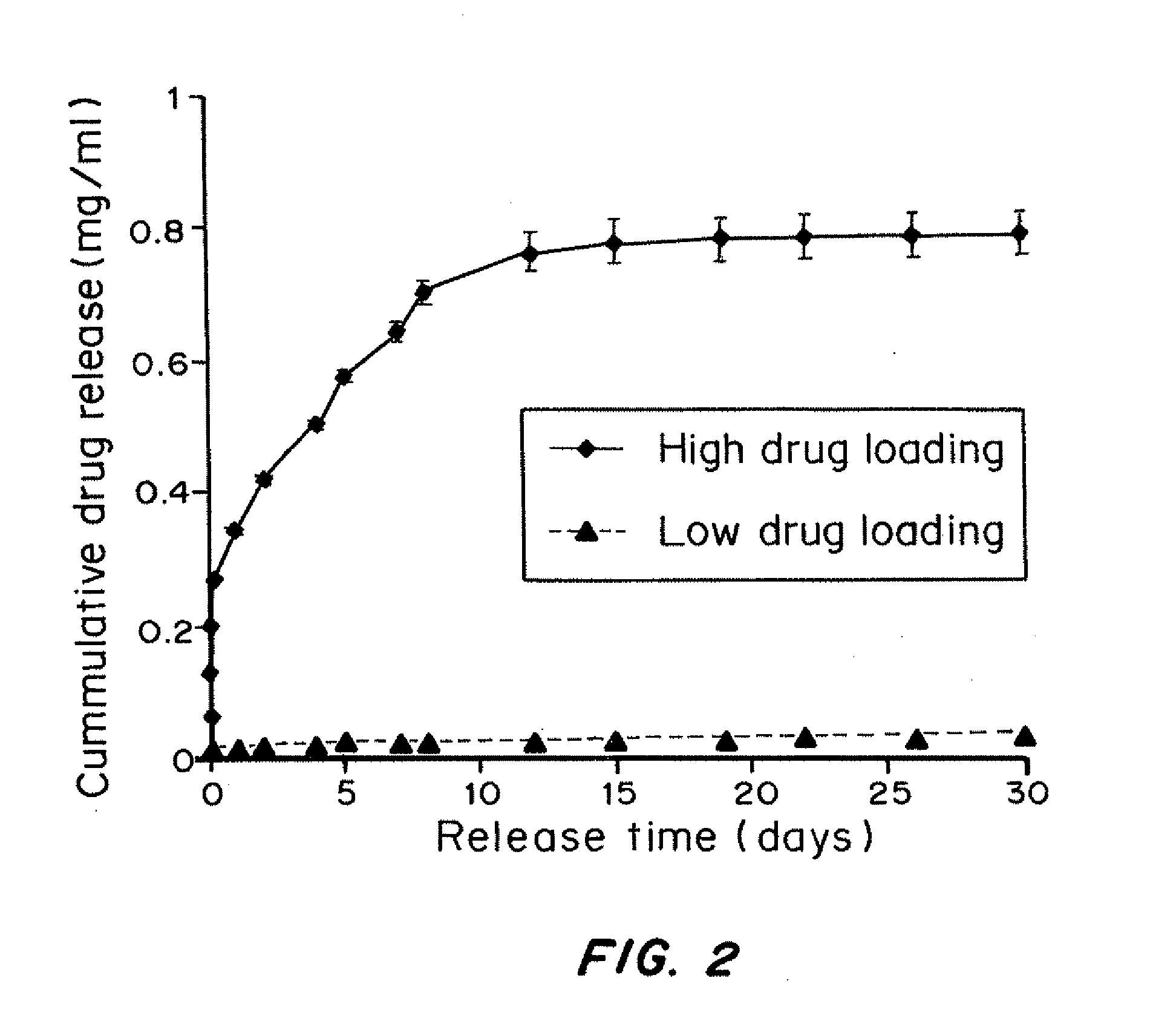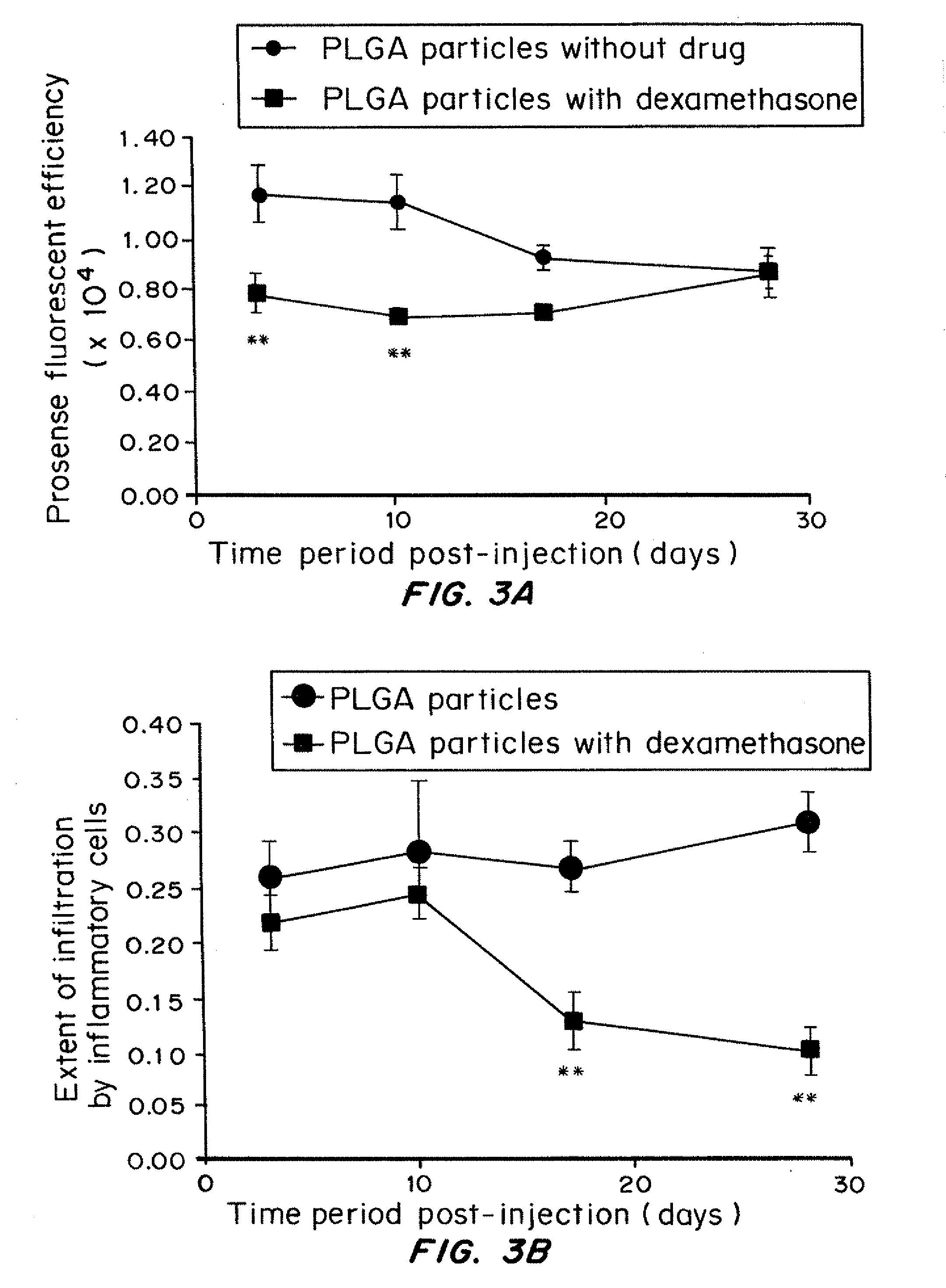Hydrogel encapsulated cells and Anti-inflammatory drugs
a technology of encapsulated cells and anti-inflammatory drugs, which is applied in the field of cell encapsulation, can solve the problems of non-specific host response, serious side effects, and inability to achieve specific host response,
- Summary
- Abstract
- Description
- Claims
- Application Information
AI Technical Summary
Benefits of technology
Problems solved by technology
Method used
Image
Examples
example 1
Effect of Drug Loading on Controlled-Release Properties
[0143]Materials and Methods
[0144]Fabrication and characterization of PLGA microparticles: Microparticles with or without dexamethasone were prepared using a single-emulsion method (Jain R A. Biomaterials 21(23):2475-90 (2000)) with biodegradable PLGA 50 / 50 (inherent viscosity of 0.95-1.20 dL / g) from Lactel (Pelham, A L). Typically, a 5 mL solution of PLGA and dexamethasone dissolved in dichloromethane, at concentrations of 40 mg / ml and 2 mg / ml respectively, was quickly added to a 25 mL solution of 1% (w / v) polyvinyl alcohol and homogenized for 60 sec at 5000 rpm (Silverson L4R, Silverson Machines Ltd., Cheshire, England). The resulting suspension was quickly decanted into 75 mL of deionized water and stirred for 30 sec prior to rotary evaporation (Buchi Rotavap, Buchi, Switzerland) for 3 min. The suspension was washed five times by centrifugation at 3000 rpm for 3 min. The particles were collected by filtration using 0.2 μm filt...
example 2
Time-Evolution of Cathepsin Activity
[0153]The in viva host response to implanted materials is a dynamic process that involves many different cell types and biological pathways. Neutrophils, monocytes and macrophages release cathepsins during the process of degranulation (Faurschou M, et al. Microbes Infect 5(14):1317-27 (2003); Lominadze G, et al. Mol Cell Proteomics 4(10):1503 (2005)). To kinetically monitor the effect of controlled-release dexamethasone on the activity of these immune cells, cathepsin activity was imaged in mice administered with dexamethasone-loaded particles (1.3 wt % drug loading). The particles were injected subcutaneously on day 0. The imaging probe was injected intravenously on days 2, 9, 16, and 27. The mice were imaged with IVIS system on days 3, 10, 17, and 28.
[0154]Cathepsin activity in response to control PLGA 50 / 50 particles was highest at days 3 and 10, and decreased significantly at later time points. However, for the microparticles containing dexame...
example 3
Time-Evolution of Cellular Infiltration
[0155]Materials and Methods
[0156]Tissue harvest and histology processing: At the desired time points, mice were euthanized via CO2 asphyxiation. The injected microparticles and 1 cm2 area of full thickness dermal tissue surrounding the implant were excised, placed in histology cassettes and fixed in 10% formalin overnight. Following fixation, the tissues were dehydrated by transferring the cassettes to 70% ethanol solutions. The polymer particles with surrounding fixed tissues were embedded in paraffin and sectioned into samples of 5 μm thickness. These samples were stained with hematoxylin and eosin (H&E) for histological analysis.
[0157]Histology analysis by laser scanning cytometry: The extent of cellular infiltration to injected polymer spots was determined by semi-quantitative imaging cytometry using the iCys Research Imaging Cytometer with iNovator software (CompuCyte, Cambridge, Mass., USA). A scanning protocol for quantification was conf...
PUM
| Property | Measurement | Unit |
|---|---|---|
| mean diameter | aaaaa | aaaaa |
| mean diameter | aaaaa | aaaaa |
| mean diameter | aaaaa | aaaaa |
Abstract
Description
Claims
Application Information
 Login to View More
Login to View More - R&D
- Intellectual Property
- Life Sciences
- Materials
- Tech Scout
- Unparalleled Data Quality
- Higher Quality Content
- 60% Fewer Hallucinations
Browse by: Latest US Patents, China's latest patents, Technical Efficacy Thesaurus, Application Domain, Technology Topic, Popular Technical Reports.
© 2025 PatSnap. All rights reserved.Legal|Privacy policy|Modern Slavery Act Transparency Statement|Sitemap|About US| Contact US: help@patsnap.com



